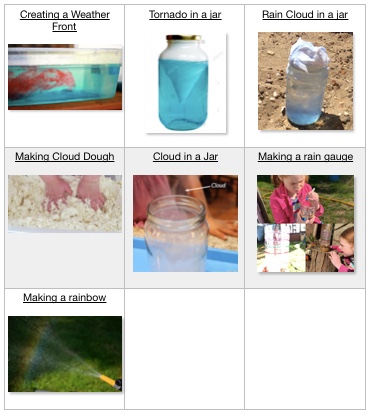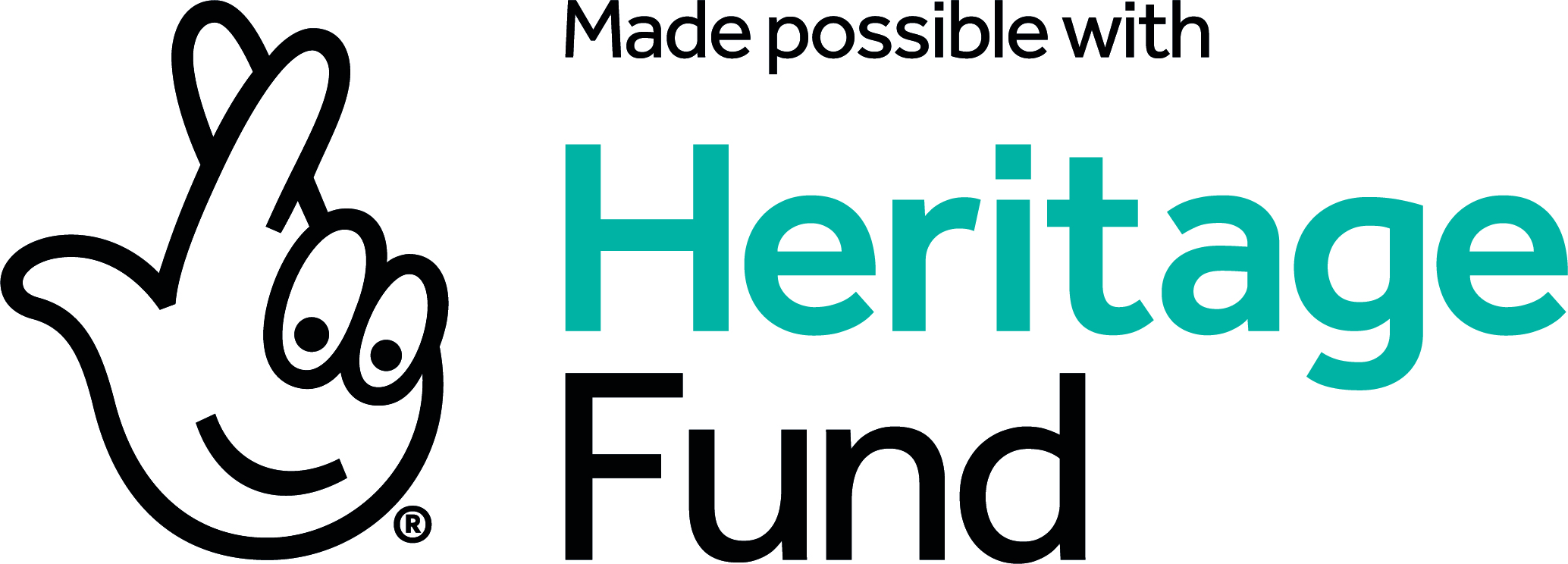You will need: Two glasses, fizzy water (this also works with lemonade or any other see-through fizzy drink, but it is better with fizzy water as its usually more fizzy), plain water, two see-through cups, a few raisins (10ish).
Place the two cups on a flat surface. Into one, pour the fizzy water. Into the other, pour the plain (still) water.
Pop an equal amount of raisins into the each cup (good maths language, understanding the phrase equal!) and watch what happens.
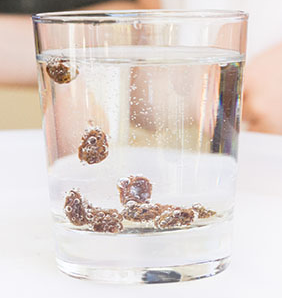
Ask your child what the difference was in the two experiments. Why do they think this is? Note: The bubbles collect on the raisins and make them bob up and down in the fizzy water and they don't move in the still water.
We have been playing about with this for a while. It's fun but will need supporting. Theres lots of versions about but we have tried to make this one only using things you should have in your cupboards already!
You will need; a jar, some honey (you can dye this by heating it up and mixing in gel food colouring), vegetable oil, water with any colour of food colouring you'd like.
You will need to pour the most dense liquids into the jar, first! This is vital! you might want to do a smaller test using a test tube or see through tube...! You want each stripe to be around 1 cm deep.
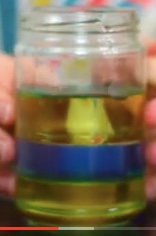
For a three layer jar (you might want to try this first!)
Honey goes in first as it is the most dense. Pour it straight into the jar.
Next is the blue water, pour it carefully down the side of the jar (or onto a spoon first).
Now for the vegetable oil. Pour it carefully onto the spoon first - you have to do this gently.
For a 6 layer jar (for older children or adults!) you will need; honey (if you want to dye this you can use gel food colouring, melt it a bit in the microwave with the food colouring and allow to set again, whole milk dyed purple, blue washing up liquid, water with green food colouring, vegetable oil, white spirit dyed red.
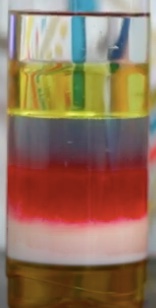
Honey goes in first
Then the whole milk (remember to pour onto your spoon!)
Now the washing up liquid - you need to do this VERY carefully
Next you have the water (again, extra care here!)
Now for the vegetable oil (keep using that spoon!)
Finally, the white spirt!
Good luck and enjoy!
This is a lovely little water density experiment. Great for fine motor skills too, with the pouring water and mixing. You will need; bicarbonate of soda, warm water, salt, sugar, fizzy water, and oil 6 jars/cups. Then 6 beads, 6 raisins, 6 leaves... you can use as many items as you find interesting.
If you don't have the resources to do these all at once, you could easily do 2 or 3 at a time.
Pour water into 1 jar/cup so that it is half full. Then pour 4 more jars/cups so they are full with water (leaving about 2 inches minimum, at the top). In the last jar/cup, pour fizzy water.

Now for the mixing. You will need to label each jar cup somehow so you know which is which.
Jar 1: Half water and half oil.
Jar 2: Fizzy water
Jar 3: water with as many tablespoons of salt as you can dissolve (we stopped at 6)
Jar 4: water with as many tablespoons of sugar as you can dissolve (we stopped at 6)
Jar 5: plain water
Jar 6: water with as many tablespoons of bicarbonate of soda as you can dissolve (we stopped at 6)
You have a pile of items in front of each jar. Ask you child if you think they will sink or float (and why). Pop them in and watch - do they sink or float? Why do you think this is?
This activity has plenty of messy potential, so you might want to do it in the garden...! So much excitement in our house doing this again today!
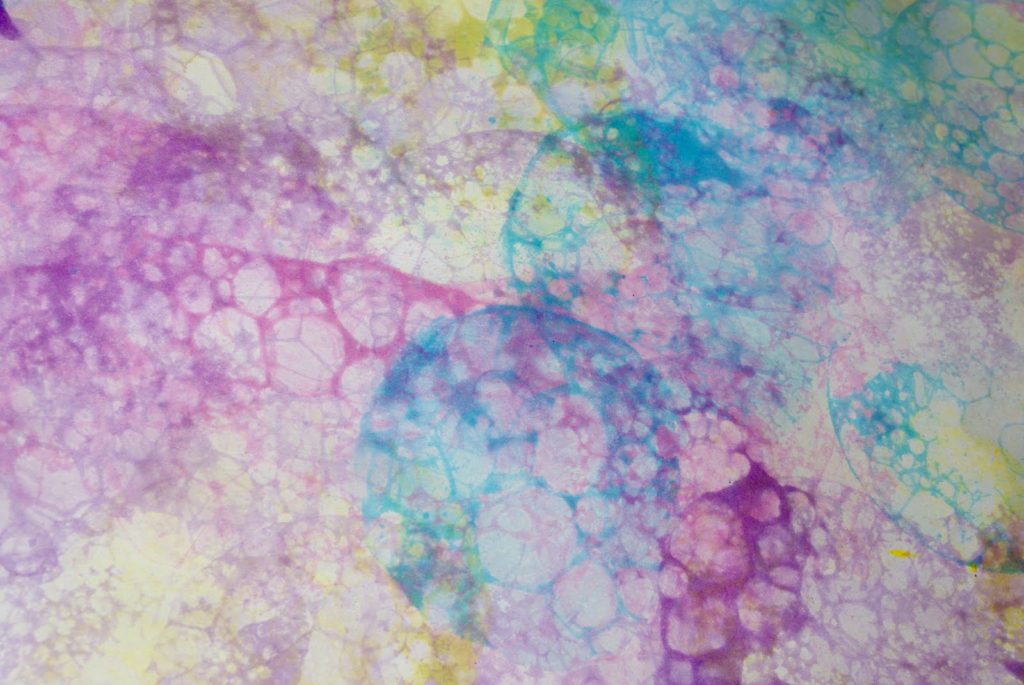
You will need: Washing up liquid, paint (we used washable paint) or food colouring, cups, straws (or an old plastic bottle, an elastic band or some selotape and mesh net - like one fruit comes in from the supermarket) and paper. We used white plain paper, but watercolor paper would be especially good if you have some handy.
Mix half a cup of water with a generous squirt of both washing up liquid and paint. If you have small people who might drink through the straws, I suggest you make the bubble bottle, below. All of the ingredients we used were non-toxic, but I’m sure that a mouthful of paint-and-soap-water wouldn’t be too much fun!
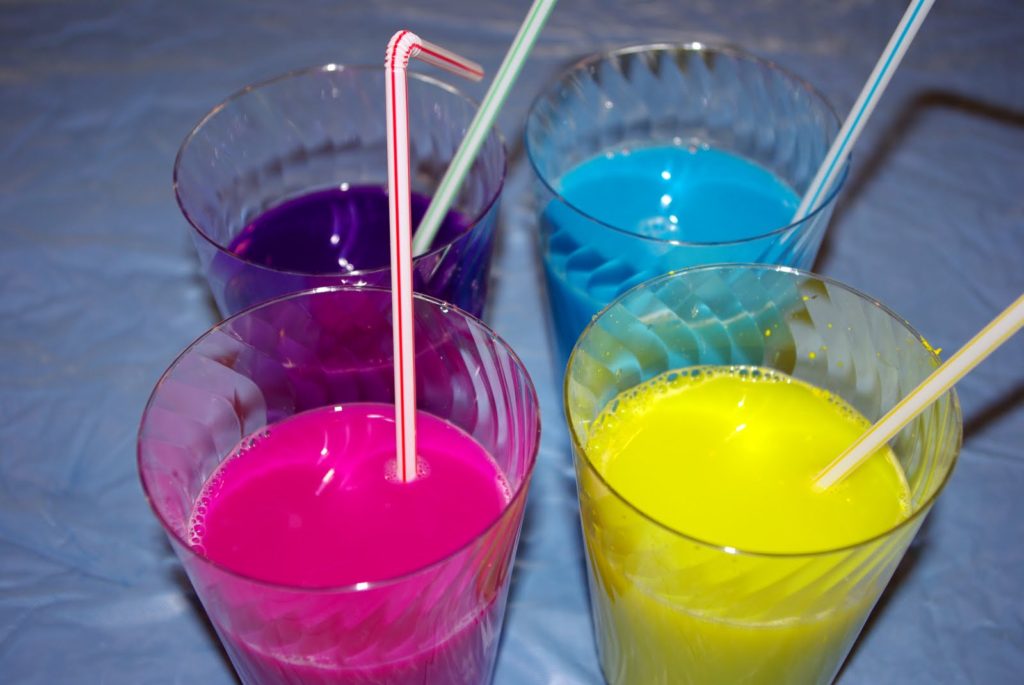
Make a bubble bottle. Cut the bottom off the bottle. Cut a square of the mesh net. Fix the mesh net onto the end of the bottle using an elastic band or some tape. Now you are ready to blow bubbles!
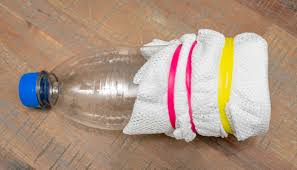
Let your children go crazy blowing mountains of coloured bubbles! If you're using a straw, then you need to blow the bubbles in the cup and place the paper on top. If you're using the bottle blower you can blow the straight onto the paper.
You get some great pictures! Enjoy!

You will need: a bottle, some water, food colouring or paint, oil, aka seltzer (or a fizzing tablet - we find fizzing vitamins work well).
- Fill 3/4 of the bottle with vegetable oil.
- Mix the food colouring/paint with water.
- Fill the rest of the bottle with the coloured water.
- Break an alka-seltzer tablet into a few small pieces - we usually cut it into quarters (its a nice opportunity to talk abut whole, half and quarters), and drop them in the flask one at a time.
- Watch your lava lamp erupt into activity!
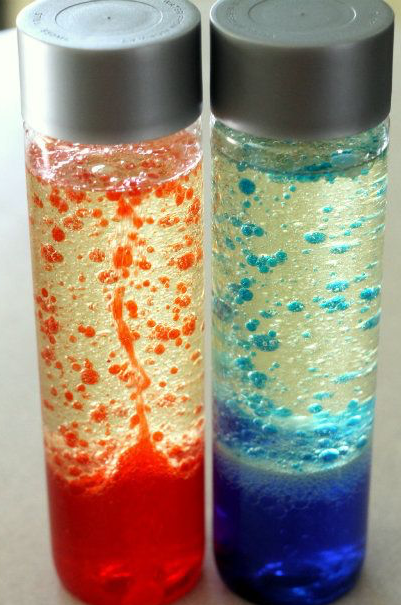
If you enjoyed this, you might also like our other activities; making a bug that walks on water, wax crayon and water art, making it rain in a jar, milk marbling and shadow drawing. You can find all 6 pages of activities here.
Continuing with our surface tension bug walking on water yesterday, there are a few different things that we can do for todays experiment. You will need: a needle (or pin), a bowl filled with water (its helpful if this is see through but not essential), a tissue/kitchen towel or cotton wool pad, some washing up liquid.
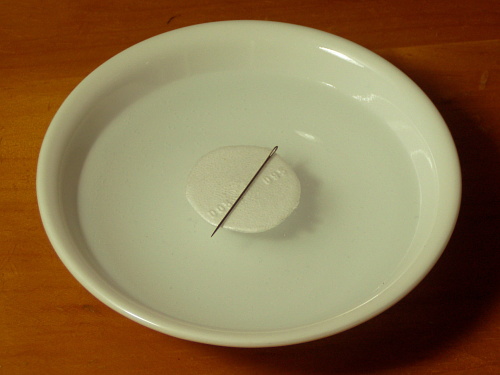
Place the bowl of water so the water is not moving. Drop the needle into the bowl of water. What happens?
Take the needle out of the water, and dry it. Place it on a piece of tissue/kitchen towel or cotton wool pad. Gently place it in the water. Wait for a minute and see if the kitchen towel/tissue/cotton wool pad sinks. If it doesn't, you need to gently push it with a stick or pencil. What happens?
Note: If this has worked, the needle/pin will be floating on the water.
The needle, like the bug, is nigh enough to be supported by the skin on the top of the water, as long as it does not pierce it.
Now, pick up the washing up liquid. Place a drop into the water - what happens to the pin?
Note: the pin will sink to the bottom, because the washing up liquid breaks up the skin of the water and the needle sinks.
If you enjoyed this, you might enjoy some of our other surface tension experiments: Bug walking on water, milk marbling, repelling water. Or take a look at the 6 pages of fun activities for you to do at home and in the garden!

- Fold a piece of thin card in half. Then, draw a bug shape with three legs and large feet. You need to make sure the top of the bug starts at the fold, so you can open it out like a greeting card. Tip: you can make your bug any shape or size, but the bigger the bug, the bigger the feet need to be.
- Cut neatly around the shape, being careful not to cut along the fold. Then, fold the bugs feet horizontally (outwards) so the shape stands up on the floor.
- Fill a dish with water and wait for the water to stop moving. Now, gently place the bug on top, so the bottom of all its feet touch the surface at once. Can you make it balance on the water? Tip: Make sure the feet sit flat.
- Now tape a coin on each side of the bug. What happens?
You might want to follow this up with this video about surface tension (Note, it is a pond skater eating another animal!). If you enjoyed this, you might enjoy our other surface tension experiment - milk marbling.
A fun, simple activity for the day today! Best done outside in the garden but can easily be done at home too!
You will need: wax crayons, paint, water, a paint brush (quite large), a cup or jar
Using the wax crayons (light colours so you can't see them - like white) make it feel a bit more magical, create a pattern (relatively simple to start with - we drew a house and sunshine) on your paper. Now make a watery paint mix (roughly 1 tablespoon of paint to 1/2 a pint of water). Paint it over the picture and watch the watery paint roll off the wax. If you leave it to dry, the paint will leave a picture.
You might want to play about with the mix of paint. Slowly add more paint to the water - does it still work?
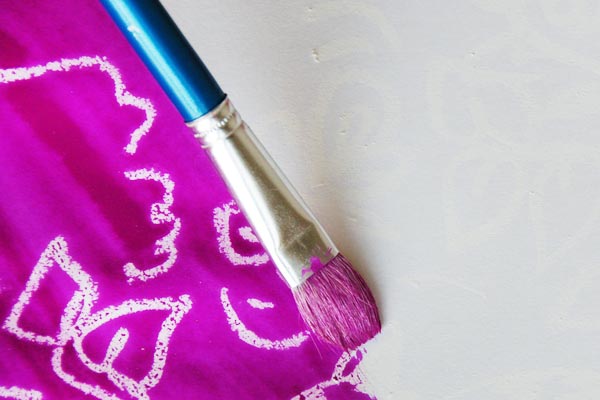
Enjoy!
Good morning! Following some feedback and requests from schools, we have decided to provide a PDF summary of the weeks activities, so you they are in one simple place with links provided.
We hope that it is useful! Please do feedback to us, we are always happy to hear how the activities are working for you (and any pictures are great!)
Todays PDF for weather can be found here.
This is one of my favourite weather experiments. Children as young as 3 understand the basics and older children really begin to see how a weather front is formed.
You will need: A Clear plastic container roughly the size of a shoebox food storage boxes or lunch boxes work well. If you down have clear white or very pale will do. Red food colouring/paint, a jug, hot water and ice cubes made with water & blue food colouring/paint.
Fill the plastic container two-thirds full with lukewarm water. Let the water sit for a minute to come to air temperature. Whilst the water is sitting, mic the red colour in with hot water.
Place a blue ice cube at one end of the container. Watch as the ice cube starts to melt. What happens to the colour - does it sink, stay in the middle or go along the water surface?
Carefully, gently pour the red, hot water into the other end of the container. Watch what happens! Does it sink, stay in the middle or go along the water surface?
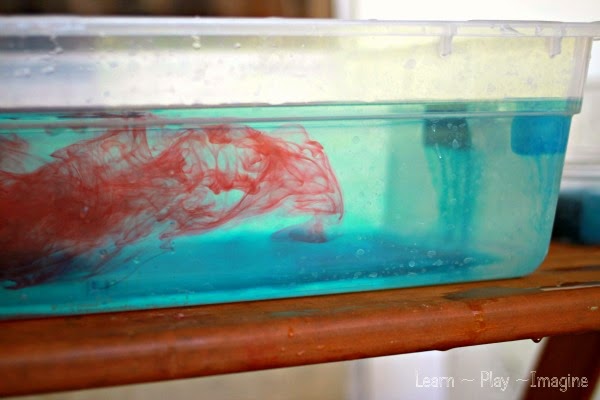
Here’s the explanation: the blue cold water (representing a cold air mass) sinks while the red warm water (representing the warm, unstable air mass) rises. This is called convection and the warm air is forced to rise by the approaching cold front, and the thunderstorm forms.
If you enjoyed this activity you might also enjoy our other weather activities: making a rain gauge, making a wind sock, making it rain in a jar, making a cloud in a jar, cloud dough and a tornado in a jar.
Another weather idea in a jar today. Love this one too! You will need: A Jar, a jug of Water (for pouring), washing up liquid, food Colouring (not essential but makes it a bit easier to see), Vinegar (you don't need this but it makes it a bit of an easier experiment). You might want some small beads or some glitter to add once you've tried this!
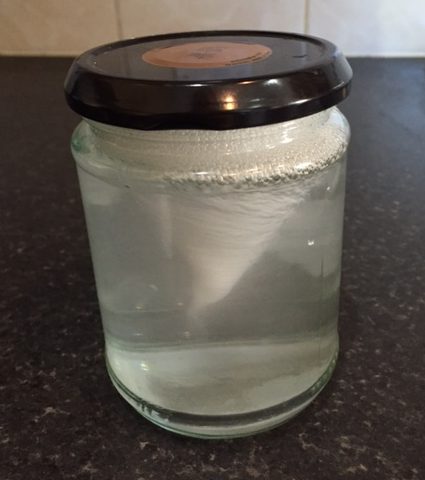
Fill your jar with water, leaving a 2cm space at the top. Squeeze in a generous squirt of washing up liquid (I used a pipette to pop it in, but a call syringe works well too), then add one or two drops of food colouring. Don’t add more food colouring than that or the water will turn too dark and you won’t be able to see the tornado forming. Now add a squirt (or teaspoon) of vinegar. I honestly have no idea if there is a scientific reason for this, but I've always found that the tornados were much better with the vinegar added, especially when its a child swirling the water around the jar!
Grip the jar with two hands and start swirling it around. Try to be gentle - swirl, rather than shake! The jar can get very bubbly rather quickly, especially if you’re shaking it vigorously. If you have too many bubbles, just open up the jar, and use a spoon to scoop some of the bubbles out. It makes it a lot easier to see the tornado if there aren’t bubbles blocking your view. You also might have to let it sit for 30 seconds to a minute to settle if its very very bubbly.
My children enjoy adding some debris into the jar, to swirl around. We added dark coloured glitter, but it swirls very quickly so you need quite a bit! Small beads also work very well. We added about 15 small beads and it was lots of fun to watch them get sucked up into the vortex!
Enjoy! If you enjoyed this activity you might also enjoy our other weather activities: making a rain gauge, making a wind sock, making it rain in a jar, making a cloud in a jar and cloud dough.
Last day of clouds today... but this is always a popular activity. Making cloud dough (or cloud fluff). Be warned, you might want your children to play with this outside, as its great sensory activity, but it can be a little messy with smaller children. Our older children also love this, so don't assume its not one for KS2!
You will need: flour (any type - coconut, wheat, rye etc) or talcum powder (or any kind of powder really) and oil. Baby oil leaves it feeling softer, but any oil works - vegetable oil is often a much cheaper alternative. Fabric conditioner works as a replacement if oil is hard to get hold of. A bowl or tray to mix and store it in.
There is a basic rule for mixing this: 8:1. So 8 cups of flower/powder to 1 cup of oil. I recommend to start, you make it using 4 cups of flour or powder to 1/2 a cup of oil. Pop them into a bowl or tray and mix them together carefully. Part of the fun is making the mix, so do include your child. The measuring is great maths too!
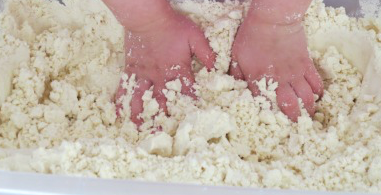
If you have any sand shapes, you can mould the dough and chop it up. Play with it. We like to mimic the shapes of the clouds in the sky. This is a handy link to spot different types of clouds.... how many clouds are in your sky today?
If you enjoyed this activity you might also enjoy our other weather activities: making a rain gauge, making a wind sock, making it rain in a jar and making a cloud in a jar.
Continuing on our clouds and weather theme, todays activity is making a rain cloud in a jar. You will need: A jar with a lid, 3 or 4 ice cubes, 1/2 a cup of hot water, hairspray.
Pour the hot water into the jar. Swirl it around in the jar, to warm up the sides. Turn the lid upside down and place it on the top of the jar. Pop the ice cubes onto the lid and count to 30. The next bit needs to be done quickly. Lift the lid and very quickly spray the hairspray into the jar. Replace the lid with the ice still on top. Watch the cloud form - my children got really excited when they could see this happening. When you see a good amount of condensation form, remove the lid and watch the “cloud” escape into the air.
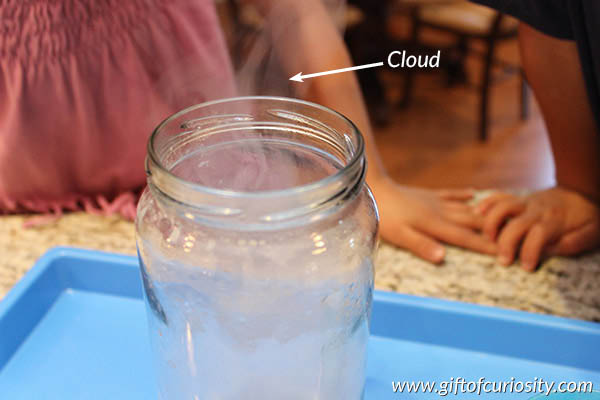
Explanation: When you add the warm water to the jar, some of it turns to water vapour. The water vapour rises to the top of the jar where it comes into contact with cold air (the ice cubes on top). Water vapor condenses when it cools down. However, a cloud can only form if the water vapour has something to hold on to. In nature, water vapour may hold onto dust particles, pollen, air pollution, volcanic ash... bits in the air. In our activity, the water vapour attached itself (condensed) onto the hairspray.
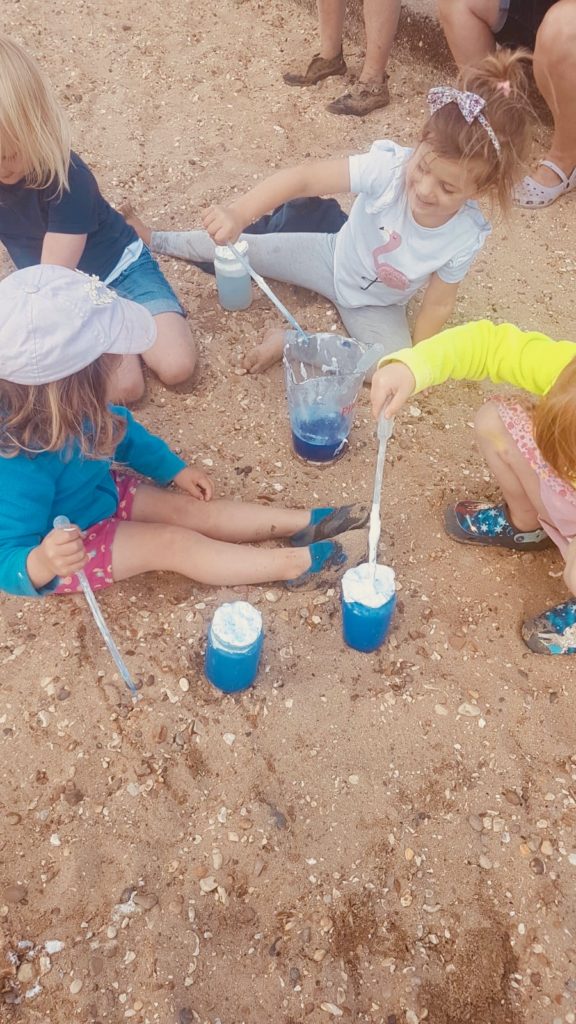
Good morning. It's a new week and we are going with a bit of a theme this week. Lots of learning about weather! So today, after all the rain for the past few days, we are making a raincloud.... in a jar. This is always a popular activity at the beach school sessions we run - we hope you enjoy it too.
You will need: some water in a jug (to pour), some food colouring (red, blue or green work best), something to gently drop water (a pipette, a water pistol, or the edge of a spoon), a clear jar, any type, some shaving foam (if you have gel, squeeze it out and rub it together to get foam. Squirty cream can work if you cannot get/do not have shaving foam.
Fill the glass jar roughly 2/3 full with clear water. Mix some of the remaining water with the food colouring, and practise making drops with your object. You need the drops to be added gently (if they are just poured directly you get a hole in the shaving foam, you want them to work their way through slowly). Can you add two or three drops at a time. Now you've practised, you're ready!
Empty the jar and refill 2/3 with clear water. Add shaving foam to fill the top - you will want about 4cm of shaving foam (to represent the clouds) on top of the water. Now, drop the coloured water slowly, bit by bit, on top of the shaving foam. Watch it make its way through. This will be the rain. Stop every 10 drops or so and watch to see if it is raining in the jar yet. It's great to see the rain start to appear as the cloud (the shaving foam) gets full of coloured water.
If you have a slightly older child, you might want to use this resource from BBC Bitesize, explaining the water cycle. It's aimed at KS2, but my 4 year old and 6 year old both watched it and understood some of it.
If you enjoyed this, you might also want to try our other weather experiments; making a rain gauge, creating rainbows, making a wind sock,
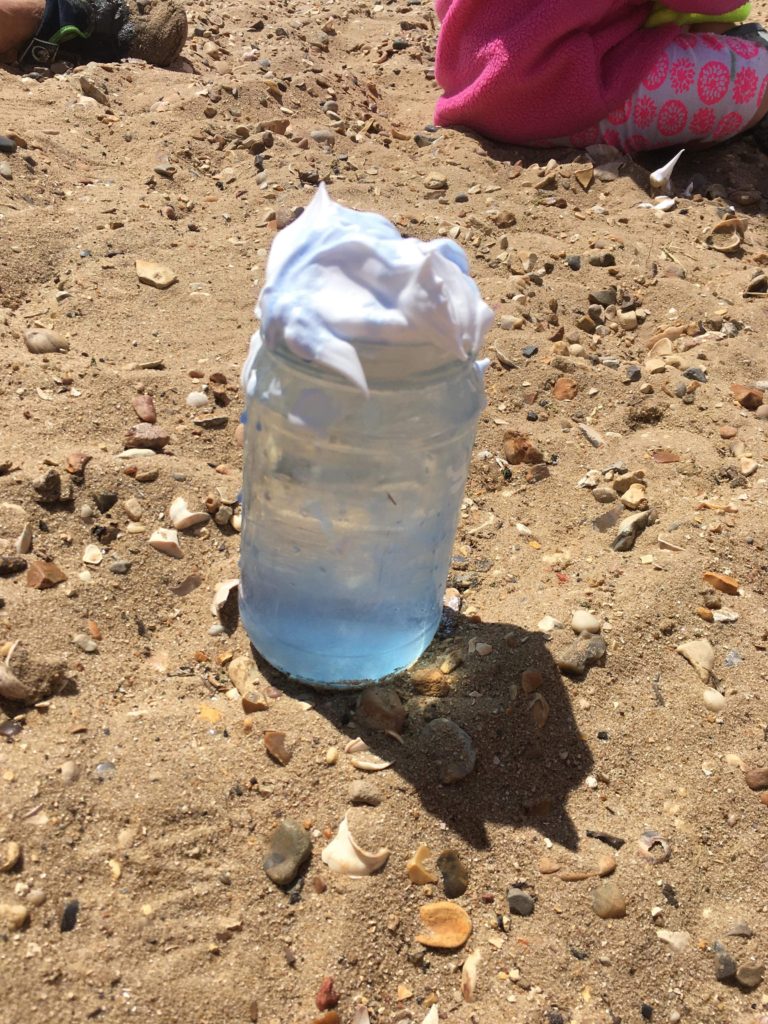
Good morning. A lovey hands on science and art activity today! It's great for smaller kids but actually in my experience, much older children also really enjoy it too.
You will need: milk (any type!), a shallow tray, washing up liquid, a pipette or something to drip food colouring, 3 or more different food colourings, a cotton wool bud (or a paint brush would work well). If you want to make marbled paper you can use any paper to dip, but watercolour paper works amazingly well! If you do this, you will need a paper drying area set up too.
Cut your watercolor paper to a size that easily fits within your tray (we used small squares). Place the stack of paper near your tray because once you start to see swirling colours you need to use the paper quickly. Pour a thin layer of milk into the bottom of your tray. Using the pipette, add in a few (start with about 3) drops of food colouring scattered around the milk. Now for the fun bit!
Dip the end of the cotton wool bud into the washing up liquid. Tap the excess off the end and touch it into a dot of the food colouring, in the milk. The soap and food coloring will now start interacting with each other and the colours will swirl around. Little and often works best!
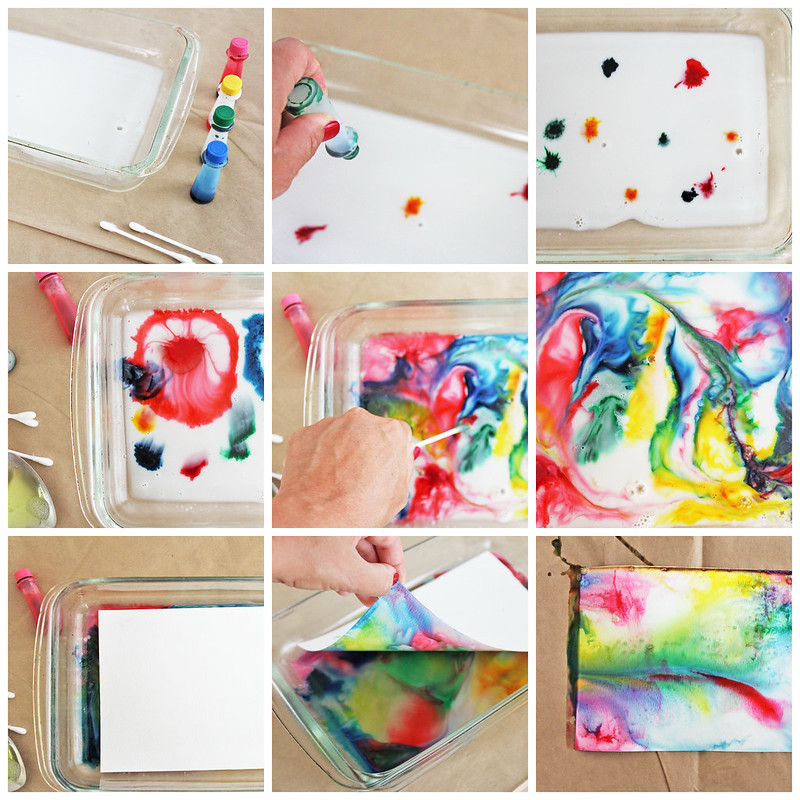
This is exciting enough on its own, but if you want to extend it, or you have older children, you can make marbled paper. To do this, before the colours get too mixed together take one sheet of your paper and lay it on top of the milk mixture. Press down. Gently lift it, set aside to dry, and continue with additional sheets.
Leave to dry completely. We were amazed with the results! Enjoy!
If you enjoyed this, you may also enjoy some of our Science activities: chromatography, salt patterns, the ice challenge or nature egg dying.
Thursday's activity is always one that can be done at home, simply. For today, you will need:
A few colours of felt tip pens (we suggest red and blue for minimal change and black, orange, purple and green for great colour splitting. But you can use any colours you'd like!).
Kitchen towel or coffee filter paper cut into strips or semi circles
A small tray or bowl filled with water
Something to leave wet paper to dry on
Draw a line roughly 2 cm from the edge of the paper. With the strips it doesn't matter which end you use, but with the semi circles, if you want to make butterflies you will need to draw the line 2cm from the curved edge. Make sure the line is relatively thick.
Now hold the kitchen towel/filter paper in the water, keeping your drawn line above the water, for 60 seconds. It's a great way to practise counting and to help with motor skills. Once the 60 seconds is over, place on a tray to dry. My children really enjoy watching the papers slowly change - so start to see some changes immediately and then as the colours change you see new lines form. Our favourite was black!
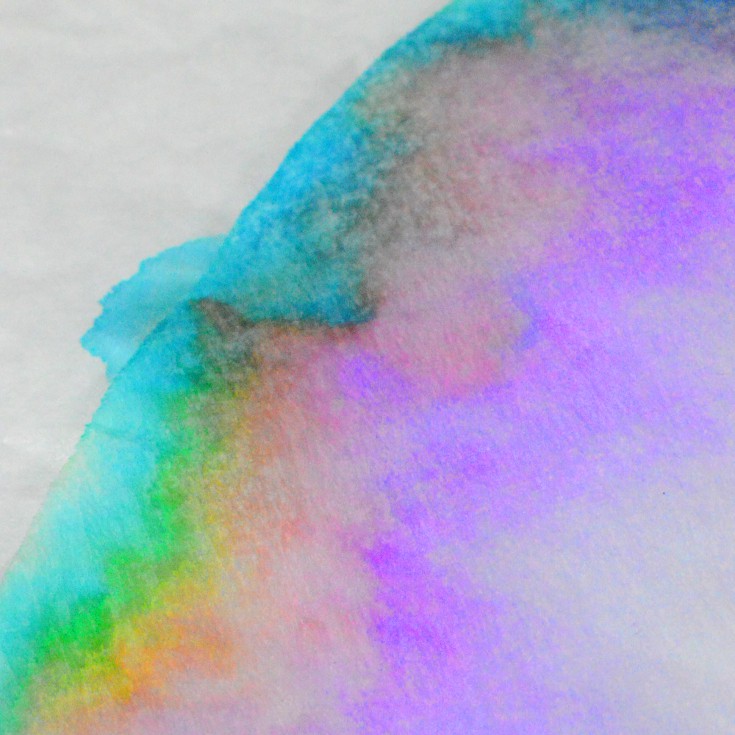
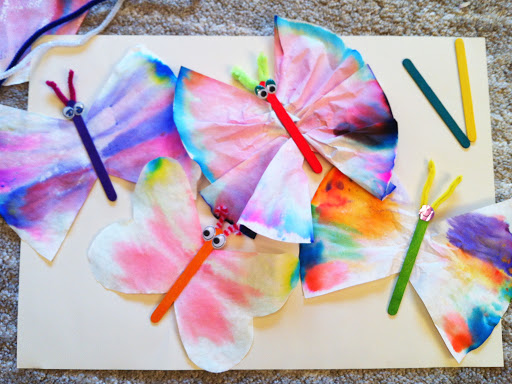
If you want to develop this activity, you can then use the dried semi circles to make butterflies. Carefully fold the semi circle to create a fan , then using a stick from the garden, or an old lolly pop stick stick it along the middle.
They look great hanging up.
If you enjoyed this, you might also enjoy some of our other activities. Splitting food colouring (very different results with some colours), colour mixing volcanos and colour mixing and pouring water.
It's another rainy day here again today and maybe for you too, so I've shuffled the activities a little bit so this task can be an indoor or outdoor one. It takes a bit of planning and waiting but it's worth it!
You will need: For the first bit: food colouring or paint, water, anything to freeze water in - we suggest a bowl or mug - and a freezer. For the second bit: salt, a pipette or water pistol (a paint brush works too) and a tray or plate to work on.
Using a your container, fill 2/3 with water. Now mix in food colouring or paint so you have a strong colour. Now pop it into the freezer. If you don't have the freezer space, you could use an smaller egg cup or a cup quite easily. You might want to do a few of these in different colours. It will probably take a few hours to freeze (we usually freeze in the morning so that we can then do the activity in the afternoon).
Once your ice has frozen you get the fun bit. Turn the ice out of its container. Pop some salt into a pot and some water in a small cup. Rub the salt onto the top of the ice and the use the pipette, water pistol or paint brush to slowly add water. As you sprinkle the salt and add the water, rubbing it in, you should see tunnels and grooves start to form. It makes an unexpectedly beautiful pattern when you hold it up to a light or window.
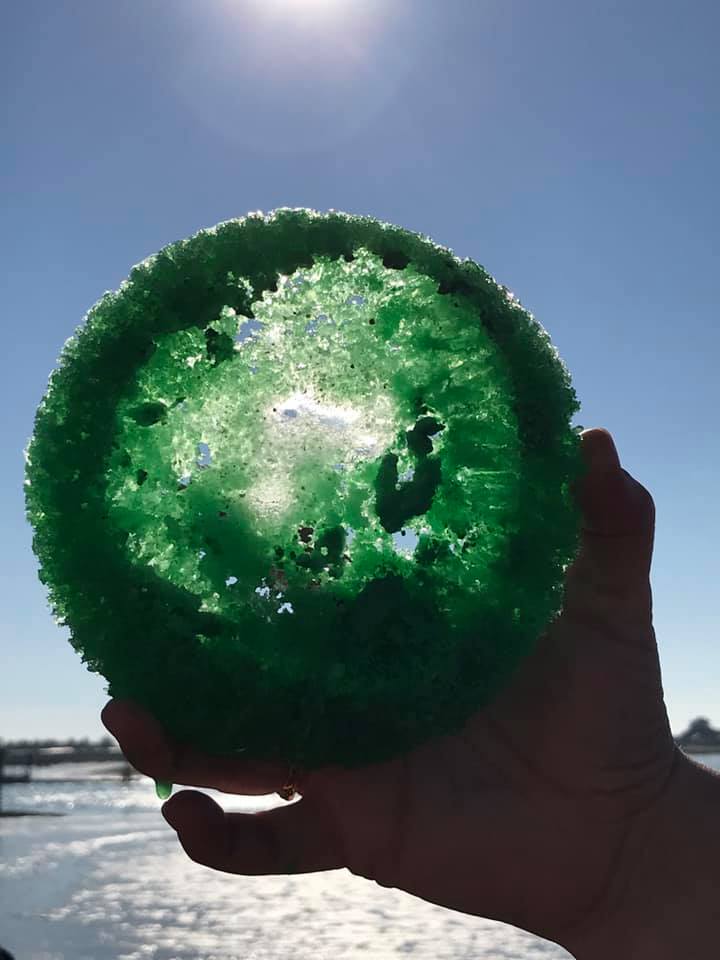
We often repeat this activity but make the water we're using with the salt a different colour (for example yellow ice and red water or red ice and blue water) so we see the two colours and some colour mixing too. It's a great revisit of our water colour mixing activity or our food dye splitting activity which are both in our activity bank.
A lovely, simple activity for today. It's raining in many parts of the UK, so you might want to use this in between the rain (or just dress for a rainy day!).
You will need: Either a printer or a pen for drawing. Some glue. Plain white paper. An empty egg box.
Draw a table or print the one below off. You can select anything you think you might see in your garden or during your morning walk. Some items I recommend are: a few different leaves, some bugs/insects like woodlice, millipede etc, wood pieces, a stick, grass, if its your garden you could add flowers you have.
If you are walking along the beach, you might want seaweed, shells, driftwood etc... or even a mix!
My children enjoy working out what they think they will see (we've been doing the same 2 walks for over 5 weeks now!) and then drawing the pictures themselves and practising writing the words. But you could print them or draw them if you want to pre-prepare!
You can stick the pictures on the top or the inside of the eggs box or on the box lid (or both) to help them classify their finds. Each section of the egg box should be used for each find.
If you want to extend this activity once you are home, you could use it to the complete the tally and bar chart activity we completed a few days ago.
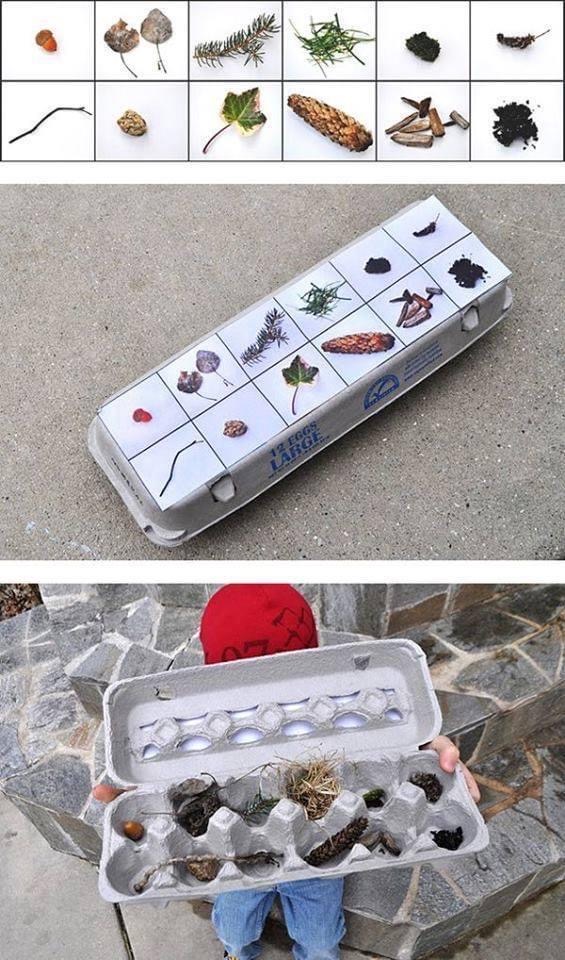
You will need: some large stones, a few flowers, a large, heavy book and baking paper (or a flower press), pva glue or modge podge, a paint brush. A sharpie if you want to write on the stone.
Collect a few flowers. If they are tiny, take a stem with a few on, if they are larger flowers, collect individual ones. Once inside, take your baking paper and fold it in half.place the flowers flat facing down in between the baking paper and place the book on top of them. Leave them for at least an hour (over night is also fine!).
You can either leave your stones natural now or paint them white whilst you are waiting. We prefer ours natural, other people like white painted stones as the flowers are clearer. It doesn't matter which you'd rather.
Take the flowers out of the book. Get your PVA glue and mix it with a little water (about 1/4 water to 3/4 PVA). Now take your stones and paint the glue onto them. Stick the flower down onto the stone, with the colour facing upwards. Make sure you're happy with its location and paint over it again with the glue, until it is entirely covered. Put to one side to dry.
It should now be ok to put outside, but if you want real longevity, you may want to paint it with varnish over the top. Now you can pop them outside where ever you want.
This is a nice activity which can be completed in the garden or in your house. Keeping to our theme of activities you are able to do inside, on Thursdays.
Today, you will need: some ice cubes, salt, string.
Place the ice cubes on a tray or plate. Carefully place a piece of string along the top of the ice cube, horizontally. sprinkle salt over the top of both the string and ice cube.
Now for the hard bit. Leave the ice for 10(fish) minutes. Go and do something else!
Now revisit the ice. You should be able to hold the piece of string on either side (not touching the ice cube) and pick it up. The ice cube should come up with it - it has (hopefully) frozen around the string. The ice forced the ice cube to melt and then it refroze around the string, enabling you to lift it without touching it.
Great science!
